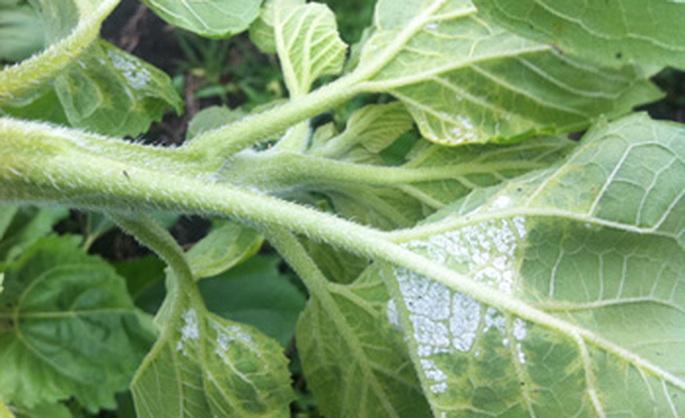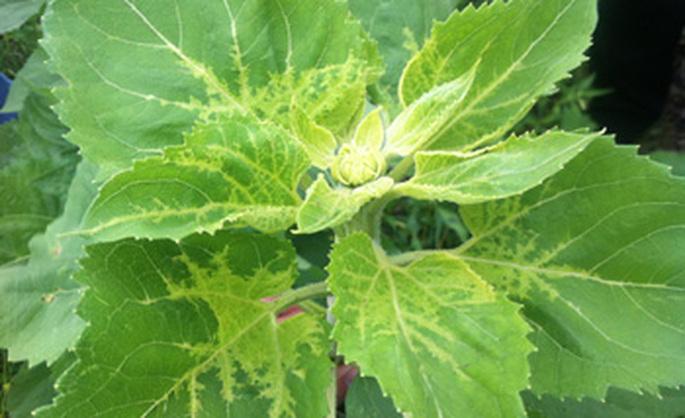Peronosporosis. Diagnosis, prevention and protection of sunflower crops
Peronospora or downy mildew (Pseudoperonospora cubensis) often affects sunflower crops in many regions of Ukraine, particularly in the steppe and forest-steppe zones. Successful control depends on understanding the causes of the disease.
The disease is caused by the fungus Plasmopara halstedii, which lives in the soil. The source of infection is plant residues and seeds infected with oospores, in which the mycelium is localized. The disease develops intensively in sunflower at a temperature of 12-14°C and high humidity of 90-95%.
Diagnosis
Most often, signs of downy mildew can be seen at two stages of development
- early - 3-4 pairs of leaves
- late - the flowering phase.
In the first case, the development of the disease is characterized by the formation of a dense white coating on the underside of the leaves, which, in turn, become small and corrugated. In the later stages of development, chlorosis will appear on the surface of the leaf blade - yellowing around the main veins and growth points, and a white coating on the back of the leaf.


Interestingly, in some cases it is extremely difficult to detect the signs of the disease. This disease can manifest itself in six forms on a sunflower plant, two of which are hidden. In such cases, the pathogen is localized in the root system, while the infection can be visually detected only by the color of the stem core (in affected plants it is brown).
Harmfulness
This disease causes thinning of crops and loss of diffusely infected plants from 30 to 50%. The head does not turn to the sun, it is formed incomplete. As a result, the weight of 1000 seeds is reduced by almost 2 times, and overall yield losses can be 1-1.5 t/ha.
Prevention and protection of sunflower against downy mildew
It is necessary to take care of the crops in advance, observing the prevention of such diseases. The spread of downy mildew can be prevented by following the traditional laws of agriculture - to observe crop rotation, destroy plant residues as much as possible and remove carrion. However, the most effective measures are the use of sunflower hybrids with genetic resistance to downy mildew and pre-sowing seed treatment with fungicidal treatments.
Sunflower seed treatments for the prevention of downy mildew contain the following active ingredients:
- carbendazim
- fludioxonil
- metalaxyl-M
- thiram
- thiabendazole
If you do not follow these recommendations, you should be prepared for significant crop losses, as it is impossible to cure the affected plants, but you can prevent the spread of the fungus.
For this purpose, fungicides of the triazole or strobilurin group are used. They localize the development of the pathogen and increase the immunity and resistance of sunflower plants.
Seeds of sunflower hybrids of VNIS selection are treated with fungicides based on the active substances carbendazim and metalaxyl-M. The sunflower hybrids of the selection are genetically resistant to downy mildew (peronospora).

 Choose a country
Choose a country